Post by 4real on Oct 27, 2011 5:42:04 GMT -5
HB ReWire from 2 to 4 conductor wiring...
I originally posted this as a part of my 'jazz-strat' project...
The HB for this project is an old gibson I got in a market in the early 80's or late seventies (possibly a victim of that era's trend to rip things out and replace it with the old muddy "super Distortion" pups...)
My gain for a couple of bucks and looks mega cool with a worn gold cover and all, but of course, single core wired...so...
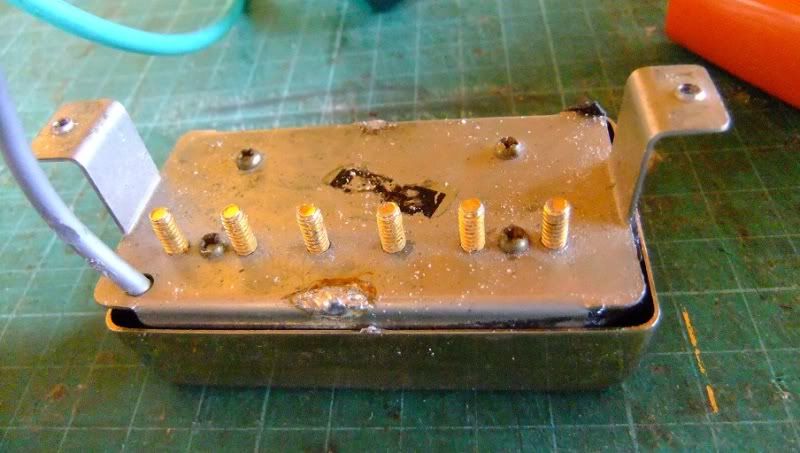
The cover was already off, possibly by me a long time ago, but to remove a bit of braided wire will soak up the solder holding the cover without fuss or too much heat....or having the solder dribble further into the join and even harder to remove. Un-soldered shield from cables work or you can have some special for your soldering kit....
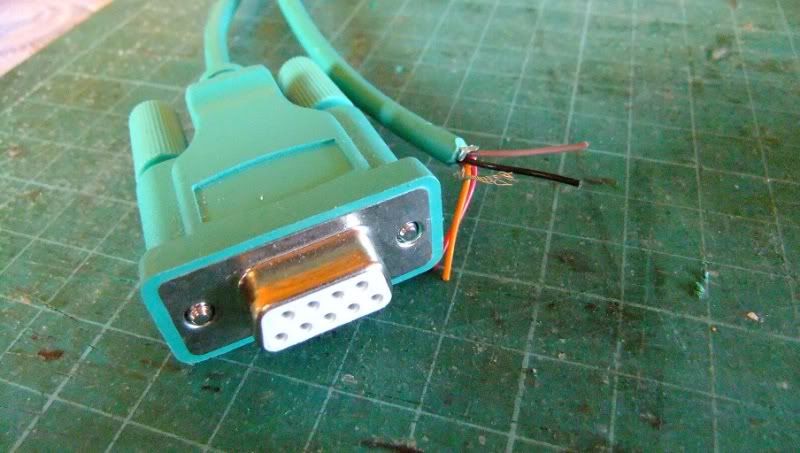
Not having a small enough 4 core shielded cable to suit, I found this computer cable is such a thing. Computer people may recognise what it is...shame about the colour, but quite good.

Take out the screw poles and remove the bottom two screws on that coil holding the bobbin on...
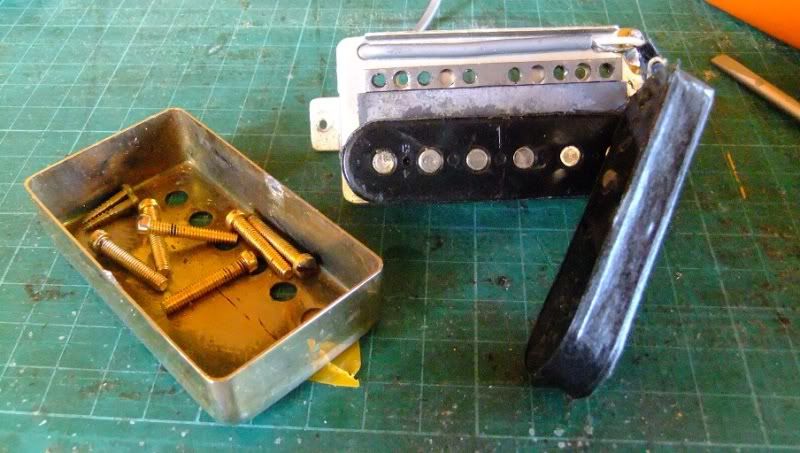
Don't loose any screws...the cover is good for this. This operation is what is required to flip the magnet as well. The cable is soldered to the base plate as is the other coil's ground wire and will need to be disconnected...again some soldering braid helps.
Be very careful with the wires from the coil, these are short and connect to the actual pickup wires which are a delicate hair of wire...so excess heat may break or disconnect thing and you do not want to expose the coil itself.
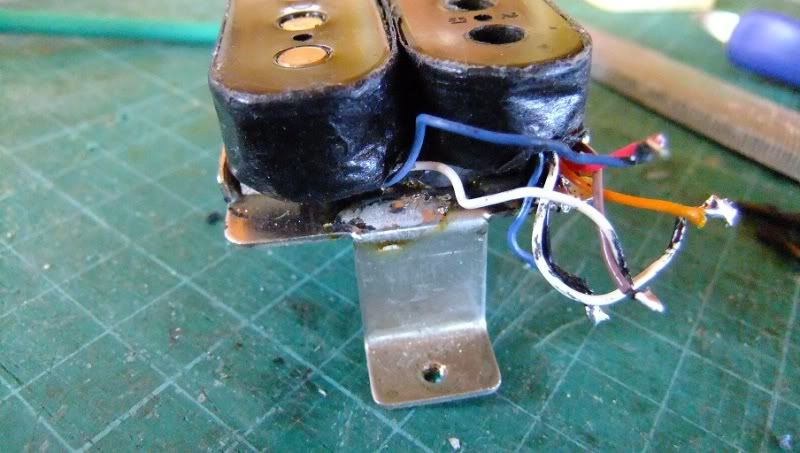
This shows the coil wires blue and white for each coil. One is connected to the first, the other two connected and another soldered to the base plate. With that last one, I snipped the wire as that is safer than de-soldering such a delicate connection. Remove the original 2-core wire.
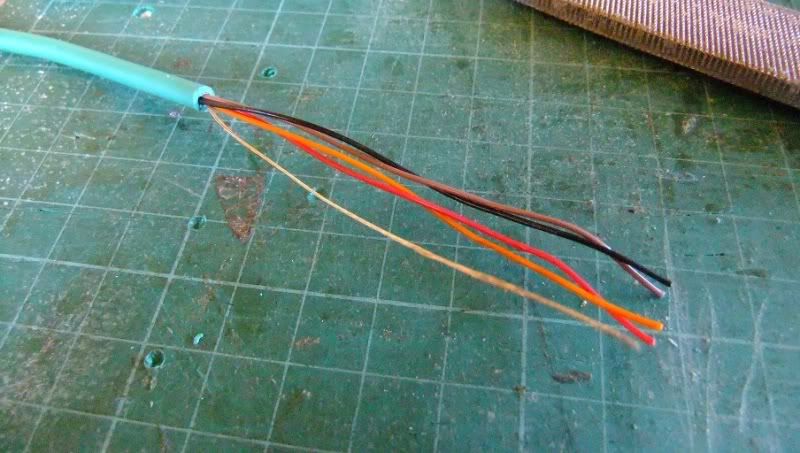
Wire stripped. This insulation was a little bigger than the whole and for the wire to sit well under the bobbin, so stripping it back to the hole is necessary...
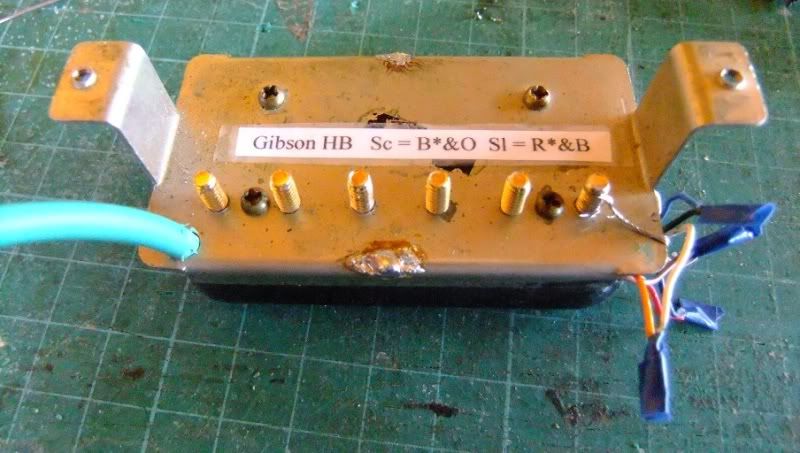
Connect the coil wires to the 4 cores, solder the shield wire to the base. I made sure the ground wire was tight to ensure that the other wires could be pulled or strained accidentally.
Put PVC tape over the wire connections so no shorts can occur...
IMPORTANT...if using an odd wire scheme, like with this cable, record the wire to coil scheme. in this case, red is hot, brown and orange connected for series and black for ground in the original series wiring...I typed a small code and taped it onto the back for reference.
Sc= screw side Sl= slug side
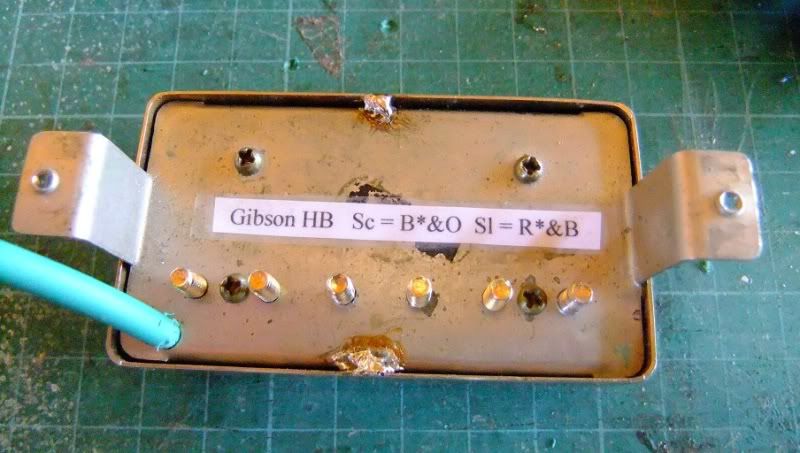
Solder the cover back together. Use rosined solder to help it flow, don't get excessive about it...
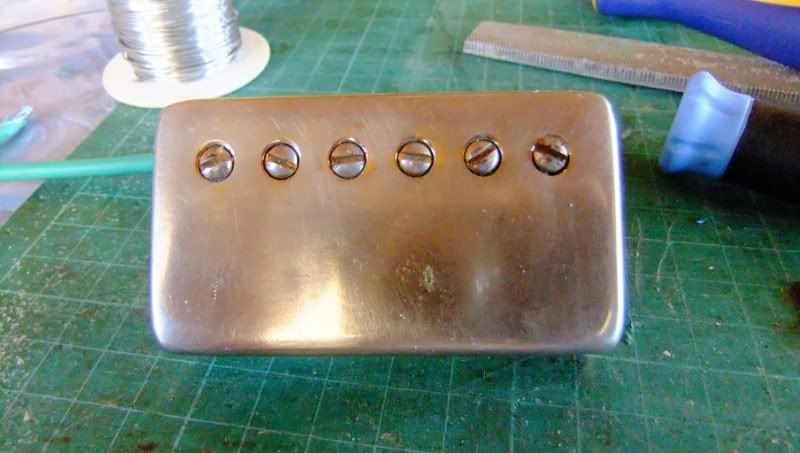
All done...when putting on the cover be sure that no wires are caught and all are tucked in neatly...and that the screw poles all line up well.
Probaly worth checking the coil values too...3790k for the screw coil, 3750k for the slug...
All good complete success for a conversion that will now allow for series/parallel/splitting/phasing capability.
Some pick-ups split really well (my SD JB is well known to sound good split and this does seem to be the case on my strat). Phasing is usually problematic as the HB coils are so close there is a huge amount of cancellation...however perhaps the HOoP options might create an interesting flavour there. There are some great sounds for an HB to have partial splitting though something like a spin-split or spin-select control... Having some of the other coil can give a bit of hum cancelling plus power and body lacking in some split HB's...perhaps combine such a control into a tone control.
...
For this project, I am thinking of including a series/parallel switch hidden into the F holes as this will give a lighter SC like sound without the noise of splitting. This is likely to be sufficient for my purposes.
...
An added note, different pickups will sound better than other in different modes. If you are tired of some very powerful overpowered and perhaps metal pup's from some kind of metal axe, consider something like parallel wiring to get more of a PAF sound.
Although most pickups these days are sold as 4 wire, making this a bit of an obscure operation in some ways, there are a lot of old pickups floating around. These instructions also show how to remove a cover or to get to and 'flip' the magnet should you need to optimise noise cancelling in your wiring scheme. Like this one, there were a lot of pickups removed from some great guitars back in the day, and you may well find yourself a bargain floating around some parts draw or the like...you might find some gold...like this HB
I originally posted this as a part of my 'jazz-strat' project...
The HB for this project is an old gibson I got in a market in the early 80's or late seventies (possibly a victim of that era's trend to rip things out and replace it with the old muddy "super Distortion" pups...)
My gain for a couple of bucks and looks mega cool with a worn gold cover and all, but of course, single core wired...so...

The cover was already off, possibly by me a long time ago, but to remove a bit of braided wire will soak up the solder holding the cover without fuss or too much heat....or having the solder dribble further into the join and even harder to remove. Un-soldered shield from cables work or you can have some special for your soldering kit....

Not having a small enough 4 core shielded cable to suit, I found this computer cable is such a thing. Computer people may recognise what it is...shame about the colour, but quite good.

Take out the screw poles and remove the bottom two screws on that coil holding the bobbin on...

Don't loose any screws...the cover is good for this. This operation is what is required to flip the magnet as well. The cable is soldered to the base plate as is the other coil's ground wire and will need to be disconnected...again some soldering braid helps.
Be very careful with the wires from the coil, these are short and connect to the actual pickup wires which are a delicate hair of wire...so excess heat may break or disconnect thing and you do not want to expose the coil itself.

This shows the coil wires blue and white for each coil. One is connected to the first, the other two connected and another soldered to the base plate. With that last one, I snipped the wire as that is safer than de-soldering such a delicate connection. Remove the original 2-core wire.

Wire stripped. This insulation was a little bigger than the whole and for the wire to sit well under the bobbin, so stripping it back to the hole is necessary...

Connect the coil wires to the 4 cores, solder the shield wire to the base. I made sure the ground wire was tight to ensure that the other wires could be pulled or strained accidentally.
Put PVC tape over the wire connections so no shorts can occur...
IMPORTANT...if using an odd wire scheme, like with this cable, record the wire to coil scheme. in this case, red is hot, brown and orange connected for series and black for ground in the original series wiring...I typed a small code and taped it onto the back for reference.
Sc= screw side Sl= slug side

Solder the cover back together. Use rosined solder to help it flow, don't get excessive about it...

All done...when putting on the cover be sure that no wires are caught and all are tucked in neatly...and that the screw poles all line up well.
Probaly worth checking the coil values too...3790k for the screw coil, 3750k for the slug...
All good complete success for a conversion that will now allow for series/parallel/splitting/phasing capability.
Some pick-ups split really well (my SD JB is well known to sound good split and this does seem to be the case on my strat). Phasing is usually problematic as the HB coils are so close there is a huge amount of cancellation...however perhaps the HOoP options might create an interesting flavour there. There are some great sounds for an HB to have partial splitting though something like a spin-split or spin-select control... Having some of the other coil can give a bit of hum cancelling plus power and body lacking in some split HB's...perhaps combine such a control into a tone control.
...
For this project, I am thinking of including a series/parallel switch hidden into the F holes as this will give a lighter SC like sound without the noise of splitting. This is likely to be sufficient for my purposes.
...
An added note, different pickups will sound better than other in different modes. If you are tired of some very powerful overpowered and perhaps metal pup's from some kind of metal axe, consider something like parallel wiring to get more of a PAF sound.
Although most pickups these days are sold as 4 wire, making this a bit of an obscure operation in some ways, there are a lot of old pickups floating around. These instructions also show how to remove a cover or to get to and 'flip' the magnet should you need to optimise noise cancelling in your wiring scheme. Like this one, there were a lot of pickups removed from some great guitars back in the day, and you may well find yourself a bargain floating around some parts draw or the like...you might find some gold...like this HB








